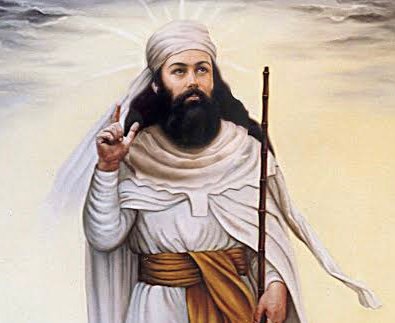Unveiling the Enigma: Understanding Zoroaster’s Teachings
Zoroaster, also known as Zarathustra, was an ancient philosopher and religious leader whose teachings have had a profound impact on the development of various belief systems. His teachings, which form the foundation of Zoroastrianism, shed light on the nature of good and evil, the role of ritual and worship, and the concept of the afterlife. In this article, we will delve into the mysteries of Zoroaster’s teachings, exploring the historical background of Zoroastrianism, its key beliefs and principles, and the influence it has had on other religions.

Historical Background of Zoroastrianism
Zoroastrianism traces its origins back to ancient Persia, present-day Iran, where Zoroaster lived and preached during the 6th century BCE. The exact details of his life remain obscure, but it is believed that he received a divine revelation from the god Ahura Mazda. Zoroaster’s teachings gained popularity in the region, and Zoroastrianism became the dominant religion of the Persian Empire, flourishing until the rise of Islam in the 7th century CE.
Key Beliefs and Principles of Zoroastrianism
Zoroastrianism revolves around the belief in one supreme deity, Ahura Mazda, who represents goodness, truth, and wisdom. Zoroastrians believe in the duality of existence, with Ahura Mazda being opposed by Angra Mainyu, the embodiment of evil. This cosmic battle between good and evil is central to Zoroastrian beliefs.
The Role of Ahura Mazda in Zoroastrianism
Ahura Mazda is regarded as the creator of the universe and the source of all that is good. Zoroastrians strive to align themselves with Ahura Mazda’s teachings, which emphasize righteousness, truthfulness, and ethical conduct. Ahura Mazda is seen as the ultimate judge who will determine the fate of all souls in the afterlife.
Zoroastrianism places great importance on the struggle between good and evil. Good thoughts, words, and deeds are seen as necessary for the triumph of good over evil. Zoroastrians believe that each individual has the power to contribute to the cosmic battle by making moral choices and leading a virtuous life.
Zoroastrian worship centers around fire, which is considered sacred. Fire represents the divine light of Ahura Mazda and serves as a symbol of purity and spiritual illumination. Zoroastrians gather in fire temples, where they offer prayers and perform rituals aimed at purifying the soul and seeking divine guidance.
Zoroastrianism’s Influence on Other Religions
Zoroastrianism has had a significant influence on the development of other major religions, particularly Judaism, Christianity, and Islam. Concepts such as the belief in a single supreme deity, the battle between good and evil, and the idea of judgment in the afterlife can trace their roots back to Zoroastrian teachings.
Ethics and morality hold a central place in Zoroastrianism. Zoroaster emphasized the importance of living a righteous life by practicing virtues such as honesty, compassion, and humility. He believed that individuals have the power to shape their own destiny through their choices and actions.
The Role of Fire in Zoroastrian Worship
Fire is considered the most sacred element in Zoroastrian worship. It symbolizes purity, light, and the divine presence of Ahura Mazda. Zoroastrians believe that fire has the power to purify the spirit and connect the physical realm with the divine realm.
Exploring Zoroastrian Scripture: Avesta and Gathas
The Avesta is the primary scripture of Zoroastrianism, containing hymns, prayers, rituals, and philosophical teachings. The Gathas, a collection of poetic hymns composed by Zoroaster himself, hold a special place in Zoroastrian scripture as they provide insight into his direct teachings and thoughts.
Zoroaster’s Teachings on the Afterlife and Judgment
Zoroastrianism presents a belief in the afterlife and a final judgment. It teaches that after death, the soul faces a judgment by Ahura Mazda, where one’s deeds and choices in life determine their fate. Good souls are rewarded with eternal bliss in heaven, while evil souls face punishment in hell.
In modern times, Zoroastrianism faces challenges such as dwindling numbers due to emigration and interfaith marriages. However, there is a growing effort to revive the religion and preserve its rich heritage through educational initiatives, cultural events, and the establishment of Zoroastrian centers worldwide.
Zoroaster’s teachings continue to captivate and inspire individuals seeking to understand the nature of good and evil, the importance of ethical living, and the pursuit of spiritual enlightenment. Despite the challenges faced by contemporary Zoroastrianism, its profound influence on the development of religious thought and its enduring legacy cannot be denied. By unraveling the enigma of Zoroaster’s teachings, we gain valuable insight into the complexities of the human condition and the eternal struggle between good and evil.

